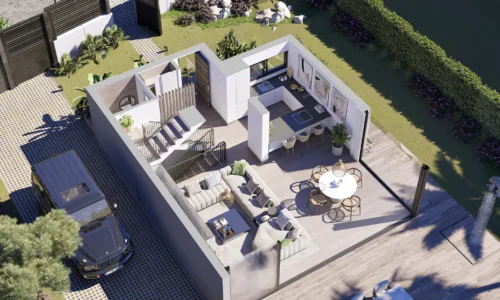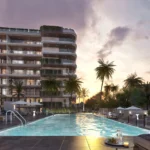
Five 3D Visualisation Trends for Architecture
- Yissel Álvarez
- April 2, 2024
- 3D Design
- 0 Comments
In the dynamic world of design and architecture, 3D visualisation has become an essential tool for effectively communicating ideas and concepts. Technological advancements are continually driving new trends that are transforming the way we conceive and present architecture, interior design, and real estate projects. If you’re interested in delving into the fascinating field of 3D visualisation, it’s crucial to understand the latest trends shaping the future of this discipline.
Read this article: Mastering 3D Visualisation Workflows: Expert Insights
1. Virtual Reality and Augmented Reality (VR/AR):
Virtual reality and augmented reality are redefining how we experience the surrounding environment. In the realms of architecture, interior design, and real estate projects, VR and AR enable the creation of immersive experiences that transport clients and stakeholders to virtual environments where they can explore and experience designs as if they were physically present.
2. Real-Time 3D Modelling:
The ability to perform real-time 3D modelling offers unprecedented flexibility to designers and architects. This technique allows for the creation and modification of 3D representations on the fly, facilitating collaboration with clients and obtaining instant feedback to adjust and refine designs.
3. Data-Driven Visualisation:
In an increasingly data-oriented world, data-driven visualisation has become an invaluable tool. In the context of architecture, interior design, and real estate projects, this trend allows for the communication of complex information in a clear and accessible manner through 3D representations. For example, it can show how a building will use energy or how it will impact the surrounding environment.
4. Interactive Visualisation:
Interactive visualisation offers users the ability to explore 3D designs at their own pace and according to their interests. This modality is especially useful for clients and stakeholders to better understand the features and details of a project, facilitating informed decision-making.
5. Accessible Visualisation:
Ensuring that 3D representations are accessible to all is a fundamental aspect of contemporary design. The inclusion of features such as subtitles, audio descriptions, and other accessibility measures ensures that all individuals, regardless of their abilities, can enjoy and understand 3D visualisations.
Read this article: The Art of Crafting Professional 3D Visualizations
If you need assistance with your architectural project and require visualisation services, please feel free to contact us for further information.





